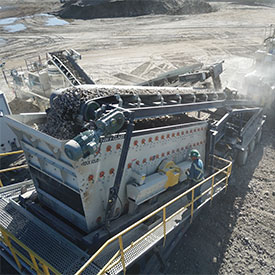
Every now and then, after a particularly tough Mine Safety & Health Administration (MSHA) inspection, a supervisor or manager will tell us with some exasperation: “Wow, we sure didn’t see that coming.”
Basically, the operator thought everything was covered but the inspection turned in a direction they did not anticipate.
The frustration in those situations is understandable. Of course, the system is, to an extent, designed by Congress to make it difficult for operators to anticipate how an inspection will go. The Mine Act gives inspectors the right of access to mine property at any time and prohibits advance notice of the inspection. Further, as every operator knows, the focus of one inspection can vary greatly from the focus of the next.
There’s just no way to know what’s coming, right?
The MDRS upgrade
Sure, there is no way to have a complete picture of what’s going to happen in your next inspection, but there is information out there that can substantially reduce the odds that you will be surprised by the outcome. That information is mostly contained in MSHA’s Mine Data Retrieval System (MDRS).
Most safety professionals know this database is on the agency’s website, using it to track their operation’s violation history. Unfortunately, our experience is that very few people beyond safety professionals make use of the MDRS as a compliance tool.
The data available in the MDRS is dramatically under-utilized. MSHA, however, just rolled out a major upgrade of the system, making now the ideal time for operators to learn the new MDRS and incorporate pertinent data into their inspection planning.
Inspection planning
Why should your MSHA inspector be the only one looking at the MDRS to plan the next inspection at your operation?
MSHA’s 2016 metal and nonmetal general inspection handbook requires that an inspector conduct an offsite documentation review prior to arriving at a mine to begin a regular inspection. Among other things, inspectors are required to review outstanding citations and orders; the Pattern of Violations Monitoring Tool; flagrant violations; injury and illness, accident and employment reports submitted since the last inspection; the mine’s injury and illness incidence rate; and the S&S Rate Calculator.
All of this information can be accessed at the MDRS. This information forms the template for the inspector’s inspection strategy.
For those used to the old MDRS, the new system will take some getting used to – especially for those who like to switch seamlessly between databases for a single operator. The system takes you back to the beginning each time you switch.
We have also noticed some discrepancies in the inspection day calculations for specific time periods. We would anticipate these bugs to be addressed and corrected in the system as stakeholders provide input.
The new system puts the important reports, statistics and data – including the S&S Rate Calculator, health sampling reports, and most frequently cited standards – in one place.
In addition, the agency added access to databases that were previously only available through pinpoint Freedom of Information Act requests or analysis of annual agency reports. The system also allows operators to search databases by industry, particular mine groupings and ownership groups. Data can also now be exported into Excel and PDF formats for comprehensive study.
Absent from the new system is the Rules to Live By Calculator. A feature of MSHA’s enforcement efforts for the last few years – and an attempted counter to the longstanding industry complaint that agency enforcement personnel do not focus on the actual standards connected to most accidents and injuries – the administration eliminated Rules to Live By as an enforcement priority.
Takeaways
Operators do not have a clean slate following a tough inspection. Their individual compliance history and industry enforcement trends play a critical role in the direction of their inspections. Both safety managers and supervisors should take advantage of the opportunity to access the same information as inspectors to gain a better understanding of what’s coming.
Bill Doran and Margo Lopez are with the national labor, employment and safety law firm Ogletree Deakins.












